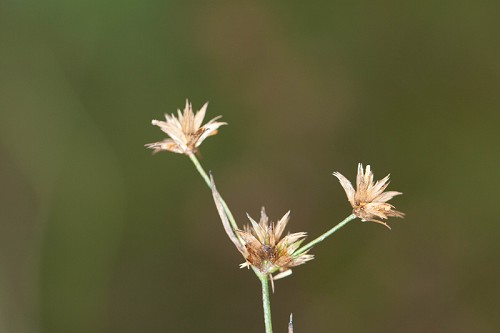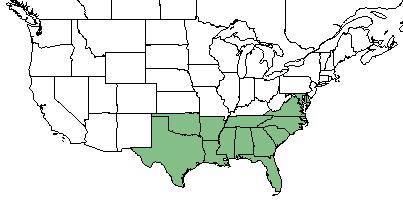Difference between revisions of "Juncus repens"
Emmazeitler (talk | contribs) |
|||
| Line 47: | Line 47: | ||
<!--==Diseases and parasites==--> | <!--==Diseases and parasites==--> | ||
| − | ==Conservation and | + | ==Conservation, cultivation, and restoration== |
| − | == | + | ==Cultural use== |
==Photo Gallery== | ==Photo Gallery== | ||
<gallery widths=180px> | <gallery widths=180px> | ||
</gallery> | </gallery> | ||
==References and notes== | ==References and notes== | ||
Revision as of 16:52, 8 June 2021
Common names: Creeping rush[1]
| Juncus repens | |
|---|---|

| |
| Photo by the Southeastern Flora Database | |
| Scientific classification | |
| Kingdom: | Plantae |
| Division: | Magnoliophyta - Flowering plants |
| Class: | Liliopsida - Moncots |
| Order: | Juncales |
| Family: | Juncaceae |
| Genus: | Juncus |
| Species: | J. repens |
| Binomial name | |
| Juncus repens Michx. | |

| |
| Natural range of Juncus repens from USDA NRCS Plants Database. | |
Contents
Taxonomic Notes
Synonyms: none.[1]
Varieties: none.[1]
Description
J. repens, also known as lesser creeping rush, is a native annual perennial with a graminoid growth habit that is in the Juncaceae family. It contains rhizomatous growth for rapid clonal reproduction as well. The mature height can reach up to 6.8 feet, yet a short lifespan.[2]
Distribution
J. repens can be found along the Gulf of Mexico coast and Atlantic coast in the Southeast United States, ranging from east Texas to Virginia and Maryland.[2]
Ecology
Habitat
The main communities include streams, ponds, lakes, ditches, wet depressions in flatwoods, and cypress savannahs.[3] J. repens has been observed in moist loamy soil of oak-hickory woods, in shallow ditches, in cabbage palm hammocks, in wet muck disturbed sites, and muddy depressions.[4]
Associated species - Taxodium spp.[4]
Phenology
Flowering time begins in June and continues into October.[4]
Conservation, cultivation, and restoration
Cultural use
Photo Gallery
References and notes
- ↑ 1.0 1.1 1.2 Weakley, A.S. 2015. Flora of the southern and mid-atlantic states. Working Draft of 21 May 2015. University of North Carolina at Chapel Hill, Chapel Hill, North Carolina.
- ↑ 2.0 2.1 USDA Plants Database URL: https://plants.usda.gov/core/profile?symbol=JURE2
- ↑ Weakley, A. S. (2015). Flora of the Southern and Mid-Atlantic States. Chapel Hill, NC, University of North Carolina Herbarium.
- ↑ 4.0 4.1 4.2 Florida State University Robert K. Godfrey Herbarium database. URL: http://herbarium.bio.fsu.edu. Last accessed: June 2018. Collectors: R. A. Norris, N. Hotchkiss, R. F. Doren, Robert K. Godfrey, Loran C. Anderson, Lisa Keppner, Cecil R. Slaughter, and Floyd Griffith. States and counties: Florida: Volusia, Leon, Washington, Osceola, St Johns, Jackson, and Jefferson. Georgia: Atkinson, Grady, and Thomas. Cite error: Invalid
<ref>tag; name "Herbarium" defined multiple times with different content